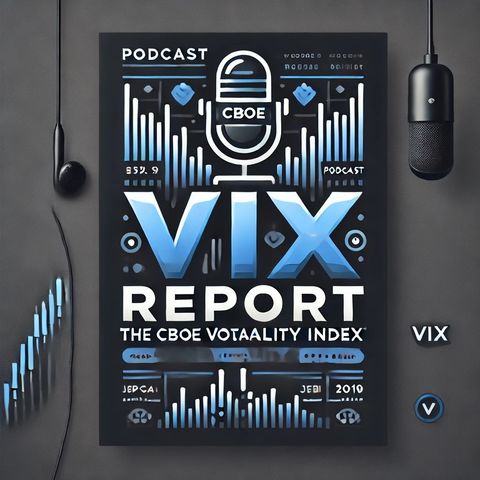Understanding the Crucial Role of the VIX Volatility Index in Navigating Market Uncertainty

Descarga y escucha en cualquier lugar
Descarga tus episodios favoritos y disfrútalos, ¡dondequiera que estés! Regístrate o inicia sesión ahora para acceder a la escucha sin conexión.
Understanding the Crucial Role of the VIX Volatility Index in Navigating Market Uncertainty
Esta transcripción es generada automáticamente. Ten en cuenta que no se garantiza una precisión absoluta.
Descripción
The Cboe Volatility Index (VIX) is a crucial financial metric that serves as a barometer for market uncertainty, specifically measuring the expected 30-day volatility of the S&P 500 Index. Derived...
mostra másThe VIX operates on a principle of inverse correlation with the S&P 500 Index; typically, when the S&P 500 experiences a decline, the VIX rises, and when the S&P 500 rises, the VIX falls. This inverse relationship makes the VIX a valuable tool for predicting and understanding market behavior, particularly in times of economic or geopolitical stress.
Several underlying factors influence the movements of the VIX:
1. **Market Sentiment**: As the market's perception of risk or uncertainty increases, usually due to political instability, natural disasters, or economic downturns, the VIX tends to rise. In contrast, during periods of market stability and optimism, the VIX tends to decrease.
2. **Economic Conditions**: Macroeconomic indicators such as GDP growth rates, inflation, and employment statistics can significantly impact the VIX. For instance, positive economic reports generally lead to lower volatility expectations, whereas negative reports drive higher volatility.
3. **Geopolitical Events**: International conflicts, trade tensions, and other geopolitical developments can substantially influence market sentiment and, consequently, the VIX. Unexpected events often cause sharp movements in the VIX as investors rush to reassess risk levels.
4. **Monetary Policy**: Decisions made by central banks, especially the Federal Reserve, regarding interest rates and quantitative easing programs, can alter market expectations and volatility. An anticipated rate hike or a surprising policy shift can lead to increased market uncertainty, pushing the VIX higher.
5. **Options Pricing**: The VIX is calculated based on the implied volatility of S&P 500 Index options. Hence, changes in option pricing, driven by shifts in market participants' expectations of future volatility, directly affect the VIX.
Investors and traders use the VIX in various strategies to manage risk and capitalize on market volatility:
1. **Portfolio Hedging**: Given its inverse relationship with the S&P 500, the VIX can act as an effective hedge against market downturns. Investors might use
Información
| Autor | QP-1 |
| Organización | William Corbin |
| Página web | - |
| Etiquetas |
Copyright 2024 - Spreaker Inc. an iHeartMedia Company
